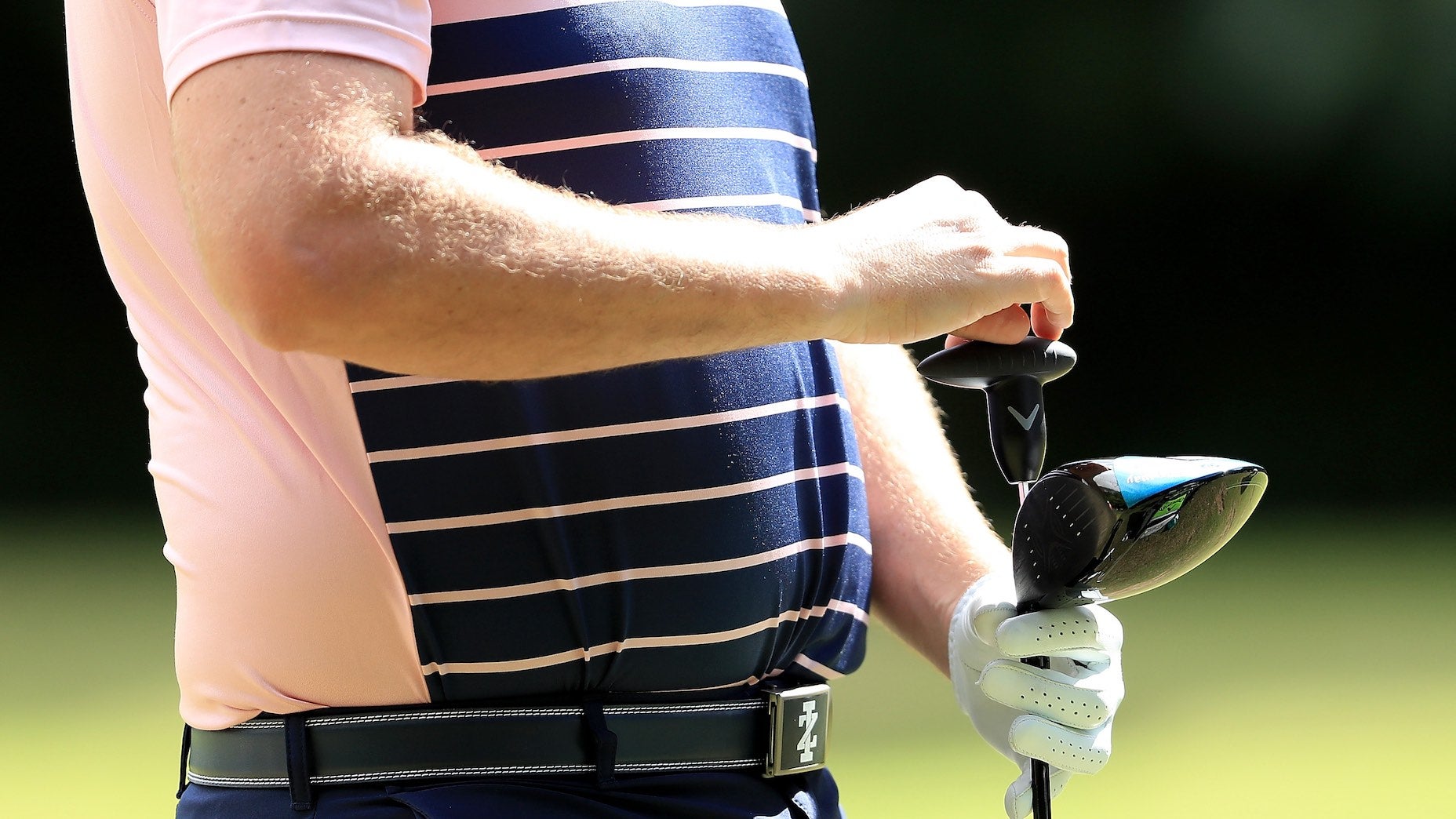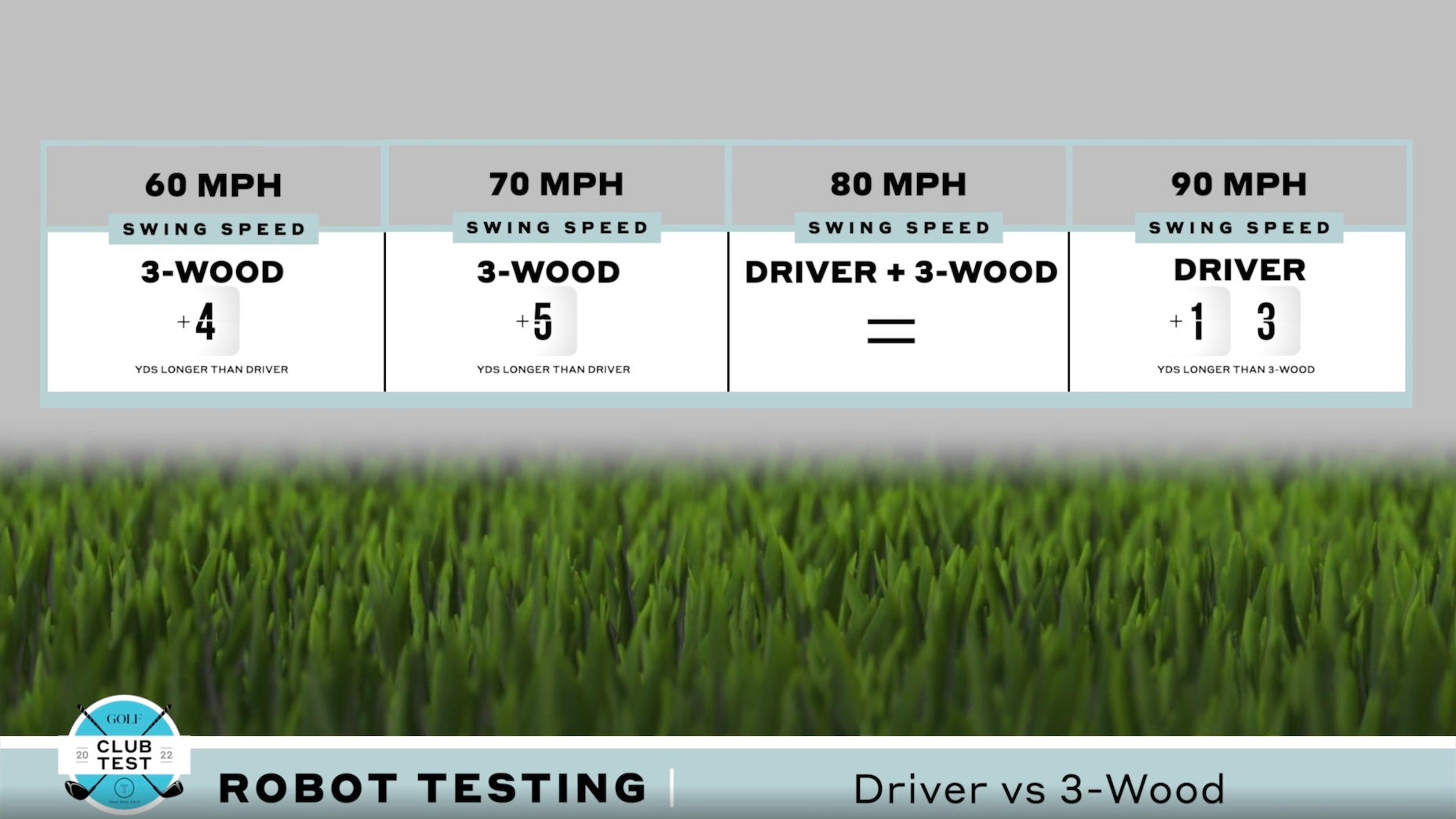
Pros use a wrench to adjust the settings on their driver. Amateurs should do the same if they want to maximize carry distance.
Getty Images
Viktor Hovland’s driving masterclass during the FedEx Cup playoffs highlighted the importance of knowing your driver and how it’s built. Simply put: Buying off the rack isn’t going to increase your chances of adding distance at the top of the bag. It takes time and customization to add yards, something Hovland ackowledged when he started to take a closer look at his Ping G425 LST driver a few years ago.
With a shorter overall build (44.75 inches), Hovland didn’t have any trouble finding the center of the club face on a regular basis. Impact consistency generally goes up when you shorten the overall length of the driver, which is why so many pros have builds under 45 inches.
But what happens when you want to get longer? Getting in the gym and adding clubhead speed is one option, but Hovland knew he’d have to play the long game if he wanted to go that route.
“When you’re playing a [shorter length] driver, it’s hard to get that much physically stronger in the gym,” Hovland said. “That’s going to take time. So why not try a driver that’s longer, which is what I ended up doing.”
In Hovland’s case, he went to a longer driver length (45.75 inches) and didn’t skip a beat. Impact consistency remained and he went from cruising at 168-169 mph ball speed, when he turned pro, to 177-178 mph this season. A nearly 10 mph ball speed increase with a longer driver is substantial, which might make some weekend golfers wonder if going longer is worth the effort. (It should be noted Hovland has been using The Stack System as well, so a longer shaft is only part of the distance equation.)
All of our market picks are independently selected and curated by the editorial team.
If you buy a linked product,
GOLF.COM may earn a fee. Pricing may vary.
TheStack Swing Speed Trainer (Hardware + App Bundle)
$349
TheStack Hardware
5 milled Stack weights enable 30 weight combinations between 0g and 300g
Dual-purpose weight case / phone stand
Highly engineered training club – Adult (41.5″) or Junior (38.5″) version (see Fitting Juniors)
Speed radar not included. View all compatible devices here. We recommend the PRGR
TheStack App Training
2-year License included, accessible on iOS only.
Dynamic speed training formulated by Dr. Sasho MacKenzie
Guided workout timer for reps, sets, and rest intervals
Custom speed metrics to track your gains
Hands-free data entry using voice entry technology
Includes access to Stack Putting (Beta) – Learn more
Includes Single User License – Enables training and tracking for up to five local (i.e. family) users under one login.
Multi-user Coaches License license sold separately.
Access TheStack App from the App Store when your order arrives. Requires iOS 15.0 or later.
View Product
Hovland had a few takes of his own on amateurs going to a longer shaft that deserve consideration, but the fact remains adding length can come with some drawbacks, including an increase in spin and dip in dispersion. Something else to consider is the simple fact that 99 percent of golfers don’t get anywhere close to 177 or 178 mph of ball speed.
But let’s assume you still want to add some speed but don’t want to make any modifications to your club build or fitness routine. The most logical way to max out your current driver is to consider adding loft, especially if swing speed has started to dip. Many of today’s drivers have adjustable sleeves that make loft and face angle modifications a cinch, so it’s a change that can be made on your time.
“The easiest way to max out that carry is to just bump up that static loft,” said Kris McCormack, True Spec Golf’s vice president of tour and education. “Trying to find a shaft and head combination that does give you that high launch, low spin characteristic to maximize carry potential. What we land in is always a constantly changing variable. And if the turf conditions out there are soft, then just hitting the high bomb that carries as much as possible is the way to go. Let’s just loft it up and don’t go changing anything with player.”
The idea behind trying more loft is simple: It’s much easier to predict carry distance compared to rollout, especially if you’re playing on courses with softer turf conditions. Increasing launch and dialing in spin (yes, more spin can be your friend in some cases) is a great way to max out the current build and even gain some extra consistency.
In fact, there are some situations where slower swingers have noticed their 3-wood goes farther than a driver — and it has everything to do with maximizing launch conditions through more loft to get the most out of the club.

GOLF
To be clear: There’s no guarantee you’ll gain 10-15 yards simply with the turn of the wrench. But it’s very possible you could squeeze a few more yards out of the big stick with more hangtime.
If you don’t have a launch monitor handy to establish launch conditions at your current driver loft, get with a certified club-fitter who can verify if adding loft to the head with your current attack angle increases carry distance.
Something else to consider is how more loft affects clubface angle on many of today’s drivers. Going up in loft closes the face angle slightly, which could be a good thing if you tend to slice the ball. Because a change in face angle could alter gear effect, it’s suggested you bring along impact tape or foot spray to find your typical impact location and see how it aligns with a different face angle.
In this case, trial and error is a great way to figure out how the settings affect carry distance. All it takes is a turn of a wrench.
Want to overhaul your bag for 2023? Find a fitting location near you at True Spec Golf.









